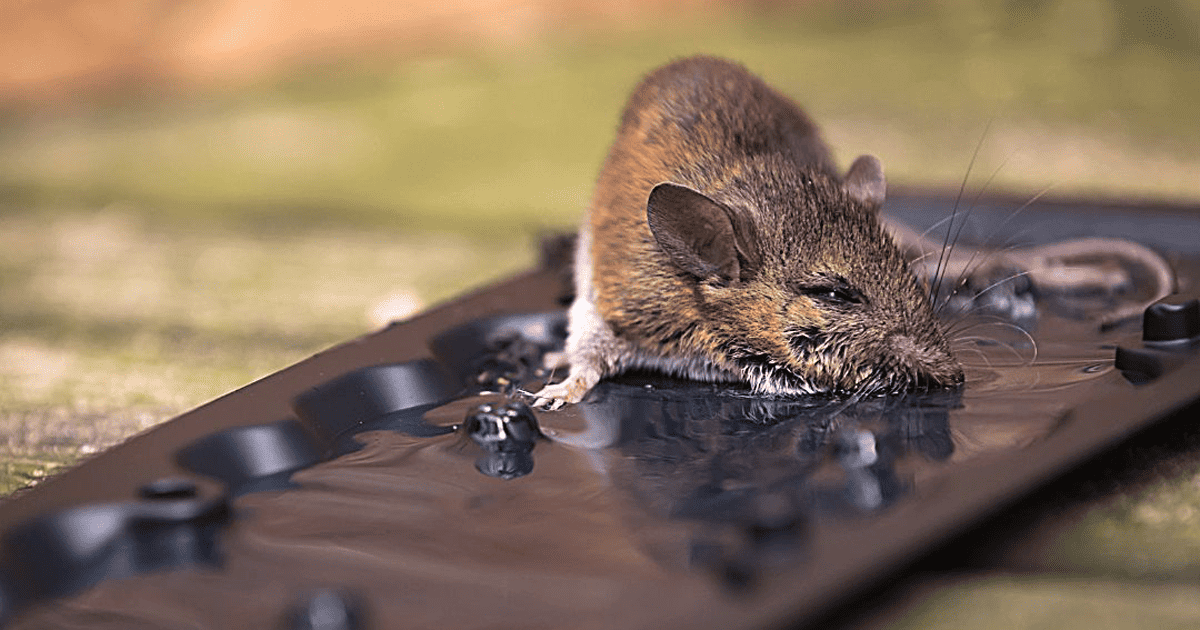How To Tell How Long A Mouse Has Been Dead
You’ve discovered a deceased mouse, and you’re itching to know how long it’s been there, not just out of curiosity but because it’s crucial to understanding the severity of pest issues in your home.
This article will take you through the decomposition process, helping you decipher the timeline of a mouse’s demise. So, lace up your detective boots and uncover the mystery of the dead mouse in your home.
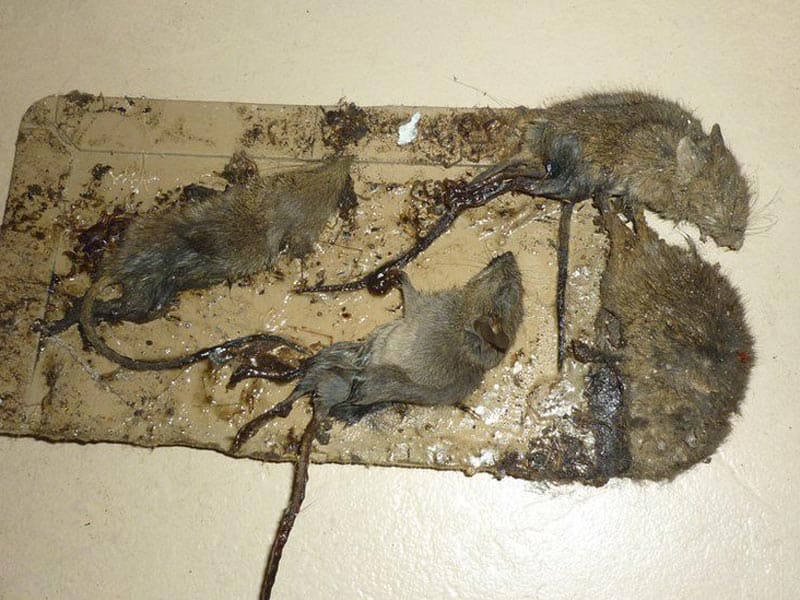
Understanding the Mouse Decomposition Process
To determine how long a mouse has been dead, it’s critical to understand the decomposition process. Numerous factors, such as temperature, humidity, and insect presence, influence this process. (Read Why Does My Laundry Room Smell Like Rotten Eggs)
The Stages of a Mouse Decomposition
Understanding the stages of a mouse’s decomposition is essential in estimating how long the mouse has been dead. If you’ve found dead mice in your house, it is necessary to note the state of the carcass. Is it newly deceased or decomposing?
The longer the mouse has been dead, the more advanced the decomposition process will be. After removing a dead mouse, it is crucial to sanitize the area thoroughly. This will help eliminate any lingering odor and potential health risks associated with the decomposition.
Time Frame for a Mouse to Decompose Fully
When dealing with a dead mouse, it’s crucial to know how long it takes to decompose fully. The process can last anywhere from a few days to a few weeks indoors.
Rodents produce a foul odor as they decompose, signaling a mouse problem. Therefore, it’s vital to dispose of the carcass properly and sanitize the area to eliminate the pungent smell.
Factors That Affect the Decomposition Rate
Continuing our previous discussion, you’re probably wondering what factors influence how quickly a mouse decomposes. The rat or mouse’s size, location inside your walls, temperature, and humidity all play vital roles.
Homeowners must seal potential entry points, including doors and windows, to prevent gnawing pests. Proper trap placement and consulting with a pest specialist can also help manage this issue.
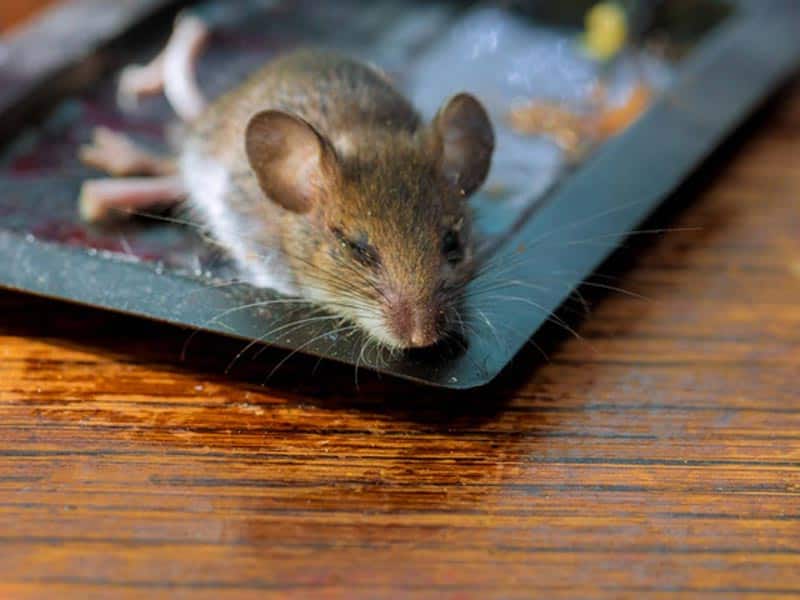
Cues to Estimate the Time of Death
As you determine a mouse’s time of death, you’ll find critical indicators in rigor mortis and visual decomposition. Rigor mortis, a post-mortem muscular stiffening, can offer significant insight into the death timeline.
Similarly, observing the stages of decomposition, from initial decay to skeletal remains, can further refine your estimate. (Read Majesty Palm Yellowing)
Identifying Rigor Mortis in Mice
In determining the time of a mouse’s death, you’ll need to identify the signs of rigor mortis, a critical factor in your investigation. This rigidity can tell if one mouse might’ve died recently, helping eliminate your rodent problem.
Visual Significance of Decomposition
Understanding a mouse’s decomposition process can give you crucial cues to estimate its time of death. As mice are nocturnal creatures, they could be dead in their nest for hours before you notice. Use your sense of smell to detect any rotten odor. Look for changes in the pellet’s appearance, which might take a mouse to decompose completely.
Insight on Mouse Behavior
Understanding mouse behavior can provide valuable insights into determining their time of death. You should notice the signs of a deceased mouse in your environment. The behavioral patterns of living mice can also be helpful in this analysis. Additionally, what mouse droppings might indicate should be taken into consideration. While seemingly minor, these details can significantly affect your comment.
Signs of a Dead Mouse in Your Environ
You’ll often notice specific signs when a mouse has died in your environment, providing insight into its behavior before death. Mice in your house, especially mice and rats, are nocturnal and love lurking around pipes.
If you need to remove a dead mouse, always wear gloves. Be aware of the signs of a dead mouse in your environment, such as unusual smells or a sudden decrease in nighttime activity.
Behavioral Patterns of Live Mice
To best assess the time of a mouse’s death, you should first familiarize yourself with the behavioral patterns of live mice. Understanding their habits helps determine a more precise time of death.
Adopting a humane approach to mouse removal, combined with preventive measures like keeping your home clean, prevents them from being around your home, thus steering them away.
What Do Mouse Droppings Indicate
If you’ve noticed a lot of mouse droppings around your home, it’s a sure sign that there’s been consistent mouse activity and possibly a substantial number of these creatures lurking around.
These troublesome signs could indicate rats or mice without a secure cabinet to shield them from ants and grubs. Determining how long will it take to rid your home of them depends on the infestation size.
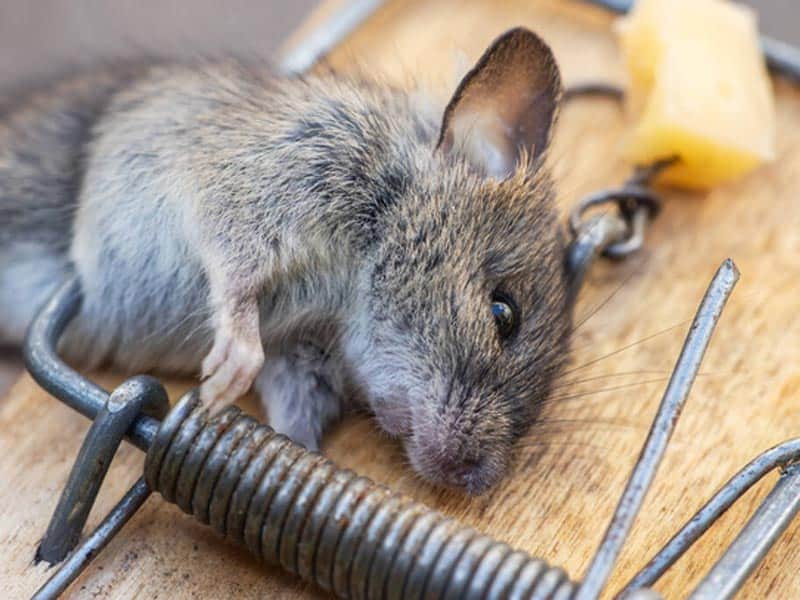
Importance of Timely Mouse Control
Understanding the duration of a mouse’s decomposition isn’t just about curiosity; it’s crucial for timely rodent control. Ignoring a dead mouse can lead to health risks, hence the necessity of effective methods to eliminate them.
Choosing the right bait is also crucial in this process, as it can significantly reduce the time to control a mouse infestation. (Read Are Flies Attracted To Wood)
Dangers of Decay: Health Risks from a Dead Mouse
You should know that a decaying mouse carcass in your home isn’t just unpleasant—it’s also a potential health hazard. Bacteria or viruses within the corpse can spread diseases.
Furthermore, the decaying body may attract scavenger insects, increasing the risk of infestations. Therefore, timely mouse control isn’t just about avoiding foul smell; it’s crucial for your health and safety.
Effective Methods to Rid of Mice
Maintaining your vigilance is essential in timely mouse control. This not only rids you of the foul smell but also significantly reduces potential health hazards. You must take an analytical and detailed approach to achieve effective mouse control. This involves focusing on prevention and timely intervention.
Seal potential entry points to prevent mice from entering your home. Keep your home clean to eliminate potential food sources and hiding places for mice. Promptly address any signs of infestation, such as droppings or gnaw marks.
In addition to prevention and intervention, traps and professional pest control services can ensure a mouse-free environment. Traps can help capture and eliminate mice, while professional pest control services can provide expert guidance and treatments for long-term mouse control.
Choosing the Right Bait for Mice
After taking the necessary measures to rid your home of mice, it’s time to step up your game by selecting the most effective bait to control any potential future infestations.
Peanut butter, chocolate, and cheese are popular choices. However, remember that bait selection isn’t as crucial as proper placement. Always position baits close to walls where mice tend to travel. Timely control is crucial to avoid a resurgence.
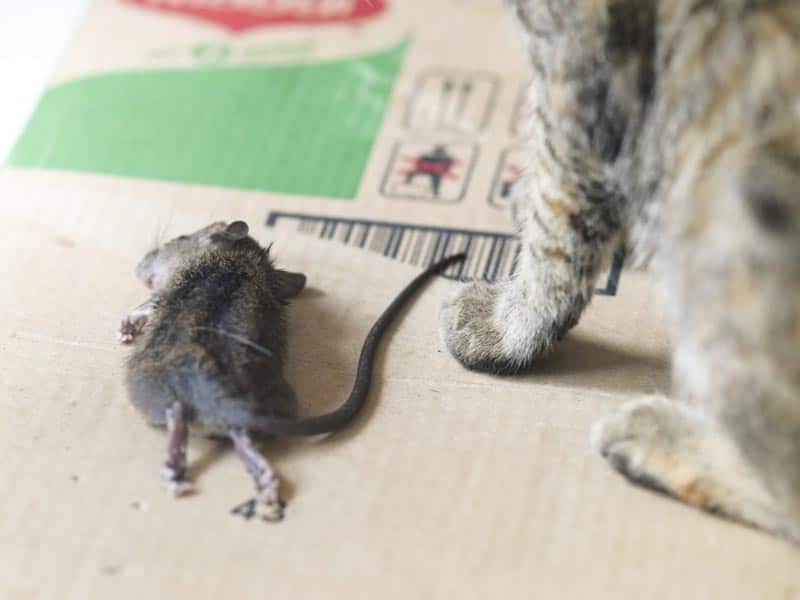
Actionable Steps for Humane Removal of Dead Mice
You’ve found a dead mouse, and removing it humanely and safely is essential to prevent the spread of potential diseases. Proper handling, disposal, and cleaning methods are crucial aspects of this process.
Let’s explore the steps you can take to ensure that the removal of the deceased rodent is done effectively and with the utmost regard for your health and safety.
Safe Handling and Disposal of Dead Mice
In the interest of your health and safety, you must handle and dispose of dead mice with utmost care. Don gloves and use a plastic bag to pick up the carcass. Please place it in a sealed container, then dispose of it in an outdoor garbage bin.
Sanitize the area thoroughly afterward. Remember, improper handling can expose you to diseases like Hantavirus, so always err on the side of caution.
Effective Cleaning Methods Post-removal
Once the deceased mouse is safely removed, cleaning the area thoroughly to eliminate any remaining germs or bacteria is crucial.
To disinfect surfaces, use a bleach solution (one part bleach to ten parts water).
Wear gloves and a mask for safety.
Dispose of cleaning materials in a sealed bag.
When to Seek Professional Pest Control Help
If you frequently spot mice or discover considerable damage, you’re likely dealing with a severe infestation.
In such cases, hiring professional pest control services can be the most effective and efficient solution. They’re equipped with advanced methods and extensive knowledge to address the problem at its root, ensuring that the current population is eradicated and future infestations are prevented. (Read Why Is My Lawn Full Of Flies)
Identifying Severe Infestations
You’ll need professional pest control help when a mouse infestation becomes severe, usually indicated by several signs. Observe for high quantities of fresh droppings, significant property damage, and increased nighttime activity.
Also, if you smell a strong, pungent urine odor, it’s a clear sign of a severe infestation. Don’t underestimate these signs; acting fast and seeking professional help is crucial to avoid further damage and health risks.
Benefits of Hiring Professional Pest Control Services
Despite the signs of severe infestation, you might wonder why you should contact professional pest control services for help.
Professionals can accurately identify and eliminate hidden nests, use specialized equipment and techniques, ensure the safe and humane removal of pests, and offer preventative measures.
They can also handle potential health hazards, minimizing the risk of disease transmission.
It’s worth considering for your safety and peace of mind.
FAQs
You’ve learned how to assess the time of death in mice, but you may still have lingering questions. This section aims to answer frequently asked queries about mouse lifespan, humane control methods, and the risks of handling a deceased mouse.
Understanding these aspects can be critical in effective pest control and prevention strategies.
How can I prevent future mouse infestation
- Start by sealing cracks and openings in walls and floors.
- Regularly clean and remove potential food sources.
- Use traps or baits strategically around your home.
- Regular inspections for signs of mouse activity are essential.
- Also, consider professional pest control services for thorough prevention.
How long does a mouse live
In understanding how long a mouse has been dead, it’s helpful to know their average lifespan:
Typically, a wild mouse can live up to about 1 to 2 years, while pet mice may live up to 2 to 3 years.
This lifespan can be influenced by various factors such as diet, living conditions, and predation.
With this knowledge, you can make a more educated guess about the time of death.
Are there humane ways for mouse control
When dealing with a mouse infestation, it’s essential to consider humane control methods.
Live catch traps, for instance, capture mice without causing harm, so you can then release them at a remote location.
Ultrasonic devices also deter mice by emitting high-frequency sound waves.
Additionally, consider preventative measures like sealing potential entry points and maintaining cleanliness to discourage mice from settling in your home.
Can a dead mouse invite other pests
You might wonder if a dead mouse can attract other pests to your home. Indeed, the decaying body can draw insects like flies and beetles that feed on dead organisms.
Furthermore, predators such as rats or birds might also be lured by the scent. Therefore, removing any deceased rodents is essential to prevent a secondary infestation promptly.
Can I touch a dead mouse with bare hands
While it’s crucial to remove a deceased rodent promptly to avoid attracting other pests, it’s equally important not to touch a dead mouse with your bare hands due to potential health risks. Dead mice can harbor diseases, parasites, and bacteria that could be harmful.
Always use protective gloves or tools to handle the corpse. Dispose of it properly and sanitize the area thoroughly to prevent pathogens from spreading.
What indicates that a mouse trap has worked
Checking a mouse trap for signs of success primarily involves looking for a caught mouse or evidence of a struggle, such as scattered bait or a triggered mechanism. You’ll need to look for physical signs like fur, feces, or disturbed areas around the trap.
If the bait is gone, but the trap isn’t triggered, you may be dealing with an intelligent mouse or improper trap setup.
How can I fully rid my home of a mouse population?
To entirely rid your home of a mouse population, it’s crucial to understand their behavior and implement a combination of control methods.
- Start by sealing all possible entry points.
- Use traps and baits strategically.
- Maintain cleanliness and store food securely.
- Regularly monitor for signs of infestation.
- For severe cases, consider professional pest control services.
Conclusion
Understanding the stages of mouse decomposition and the factors affecting it is essential for accurately determining how long a mouse has been dead. Assessing conditions such as temperature, humidity, and insect activity can help.
Observing physical changes, rigor mortis onset, and body hardening timelines can also provide clues. It’s a complex process, but you can make an educated estimate with careful observation.

